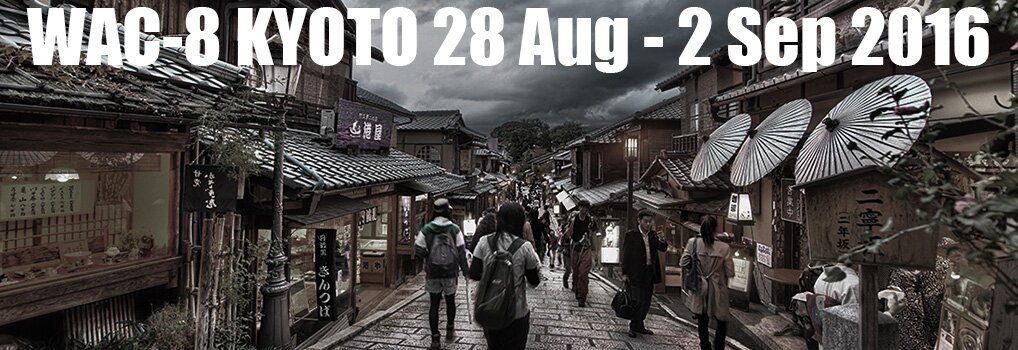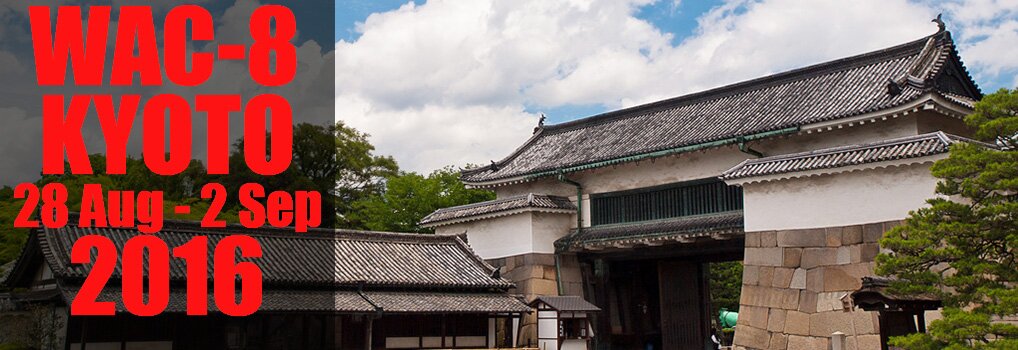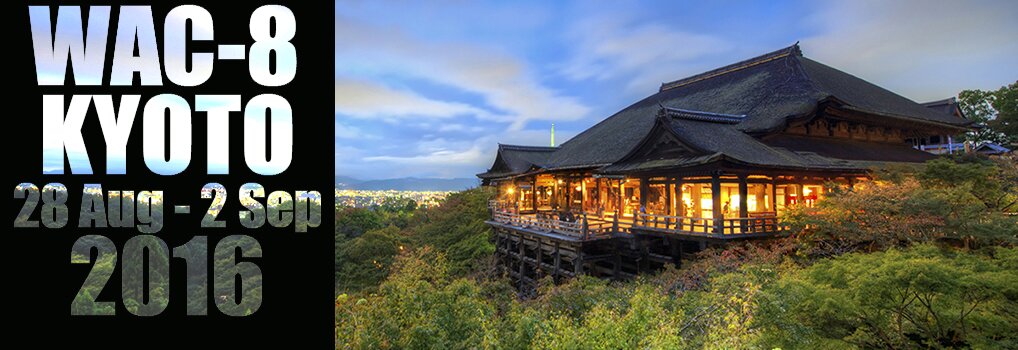| T01 | T02 | T03 | T04 | T05 | T06 | T07 | T08 | T09 | T10 | T11 | T12 | T13 | T14 | T15 |
| Theme list | Session organizers index | Accepted sessions list |
| T11. Religion and Spirituality Timothy Insoll |
|---|
| Fundamental to human ontology since prehistory have been concepts of spirituality. Relevant beliefs have taken many forms and have generated a diverse archaeological legacy. Landscape, architecture, burial, settlement, diet, art, the human body, perception of the world, can all be influenced by religion and spirituality. Varied approaches have also been adopted in exploring religion and spirituality in archaeological contexts. Consensus does not always exist in the terminology employed – spirituality, religion, religiosity, belief, ritual etc. – or in the degree to which they are applicable archaeologically. Different theoretical perspectives and methodologies have also been adopted according to religious ‘types’ or beliefs – ‘world’, indigenous, literate, oral, living, disappeared – and whether viewed from an emic or etic position. Ethical considerations can be significant, sensitivities enhanced and controversies created where the focus is upon religion and spirituality. Ethnicity, gender, sexuality, age, status; identities can be defined, structured, and suppressed by such beliefs. The ‘Religion and Spirituality’ theme seeks to explore these in a global perspective and across time. Sessions and papers that consider spirituality, ritual, and religion in all these dimensions and in both prehistoric and historic contexts are encouraged. |
Exploring the Cultural Diversity of Sacred Sites and Sacred Landscapes around the World
Organiser(s): Terence Meaden (Oxford University / UK) and Maria Giuseppina Gradoli (University of Leicester / Italy)
Type: Symposium
Contact: terencemeaden01(at)gmail.com
Abstract:
Exploited landscapes worldwide store a palimpsest of information regarding the activities of past inhabitants. Among the avocations of the world’s communities the practice of religion was pre-eminent if not all-pervasive in affecting multiple facets of people’s lives. Sacred landscapes have existed since pre-Neolithic times. From the Neolithic onwards a major reason for the dominance of spirituality was the need for success in arable farming and animal husbandry. This partly explains why early peoples recognized the sacredness of landscapes and the importance of the cosmos, weather and land fertility in producing successful outcomes for harvests and livestock. Communities considered that actual and potential problems could be resolved by religious practices that were promoted and encouraged by spiritual leaders. Clues to the nature of their spirituality and religion lie in examining the detail of surviving monuments and associated artefacts whose embedded symbols and images invite close inquiry.
Appropriate topics will focus on principal features of prehistory and history chiefly via interpretation of the archaeological record. Lectures recognizing this are welcome in order that comparisons can be drawn between worldviews, religions and cultures particularly where there are relevant new discoveries in Europe, Asia, Africa, Australasia and the Americas.
Keywords: Sacred landscapes, embedded symbols and images, animism
Islam, Vernacularization and Cultural Heritage
Organiser(s): Trinidad Rico (Texas A&M University at Qatar / Qatar) and Rachel Ama Asaa Engmann (Hampshire College / USA)
Type: Symposium
Contact: trinidad.rico(at)qatar.tamu.edu
Abstract:
Recent years have witnessed a burgeoning interest in Islam as it relates to material culture and practices of heritage. Yet scholarly approaches to Islamic material religion are often under-theorized in heritage studies, resulting in three persisting notions: first, Islam is always identifiable in the material culture record; second, a universal/global Islam lies in tension with particular/local material adaptations of Islam; and third, Islamic material culture is at odds with dominant heritage preservation practices. This session therefore invites papers that consider Islam’s global historical and contemporary configurations and how these are reflected in heritage debates and practices. We welcome contributions that significantly engage with what is meant by Islamic heritage, considering where and how this type of material culture is created, located and mobilized by Muslims and non-Muslims alike, and the ways in which different disciplines are implicated. How do concepts like ‘syncretism’, ‘popular’ and ‘local’ enable us to understand Islamic lived experiences and heritages? What does it mean to talk of vernacularization of heritage values in Islamic contexts? What is the role of transnational Islamic networks of cooperation in the global heritage discourse and preservation practices? And how are construction, destruction and conflict of values addressed in these discussions?
Keywords: Islam; Materiality: Vernacularization
Global perspectives on religious heritage: Okinoshima and the formation of syncretic beliefs in world context
Organiser(s): Simon Kaner (Sainsbury Institute for the Study of Japanese Arts and Cultures / UK), Miki Okadera (Fukuoka Prefectural World Heritage Registration Promotion Division / Japan ) and Sam Nixon (Sainsbury Institute for the Study of Japanese Arts and Cultures / UK)
Type: Symposium
Contact: s.kaner(at)uea.ac.uk
Abstract:
The archaeology of religion is a rapidly developing field, and how we deal with religious heritage around the world is often contentious. Much religious heritage is intangible, but there are of course many tangible aspects as well. This session addresses issues that arise through the spread of ‘world religions’ as they come into contact with local, indigenous spiritual beliefs and practices. This session draws in particular on work undertaken for the nomination of Okinoshima as UNESCO World Heritage to explore broader themes in the archaeology of the arrival of Buddhism and its impact on local beliefs. We invite contributions that will focus in particular on the archaeology of syncretism and case studies in dealing with religious heritage, including from the Silk Road, to set studies of early Buddhism and Shinto in a comparative global perspective.
Keywords: archaeology of religion, Silk Road, Okinoshima
Marking the Land
Organiser(s): Gail Higginbottom (Australian National Univerisity / Australia) and Thomas Whitley (Sonoma State University / USA)
Type: Symposium
Contact: gail.higginbottom(at)anu.edu.au
Abstract:
Marking the land, a universal phenomenon from water-ways to mountain tops, from deep caves to outer-space. We wish to explore the possible dynamics that enabled people to alter natural places that they had hitherto revered, and to comprehend more fully at what point these modifications were seen as enhancing Nature and the natural and at what point they were seen as the symbol of being Human and representing human forces over Nature. Whilst these topics have floated around on the edges of archaeology (via philosophy or anthropology) there is still little solid archaeological work that has grappled with these conundrums. Therefore this session invites people using any informative methodological procedures that examine human-landscape interactions, in particular, those that have uncovered something of people’s beliefs related to the natural and construction or which have helped them understand something about the ‘evolved’ human propensity to make things that mark the landscape. These approaches should help us comprehend how people understood their surroundings and why they chose to interact with it through modification or construction. Possible methods may include GIS spatial analyses (e.g. network analysis), multi-agent simulations (agent-based modeling), rock art interpretation, genetics & human mobility or migration, cognitive landscape-modelling and narrative construction.
Keywords: human-landscape interactions, cultural transitions, methodological approaches
Religiosity and Spirituality as expressed by Water Related Art and Architecture in South and Southeast Asia
Organiser(s): Amarjiva Lochan (University of Delhi / India) and Simona Chaudhry-Ferraro (University of Basel / Switzerland)
Type: Symposium
Contact: amarjiva(at)hotmail.com
Abstract:
Water plays a pivotal role in the study of cosmological order among Hinduism and Buddhism, the two major streams of religiosity in the region of South Asia and Southeast Asia. The creation of universe and its destruction, nurturing of life, the sacred bath and pilgrimage, spirituality and meditation- all are associated with the waters and they form significant part of both Hindu and Buddhist world.
Such beliefs are kept in the minds of people when they are displayed amply in the tangible heritage of the region. Whether it is the depiction of the churning of ocean (samudra) and related deities or that of the world beneath (naga-loka), the sacred complexes of architecture highlights the significance of water for the people in this region. The proposed session deals with the motifs and icons as seen in the art and architecture of South and Southeast Asia which feature waters.
Keywords:




